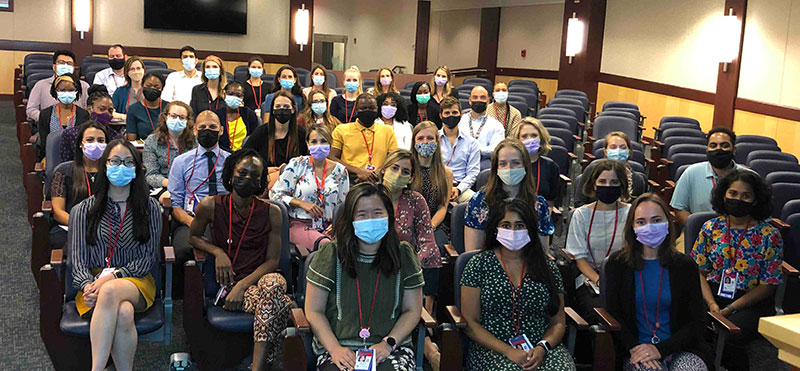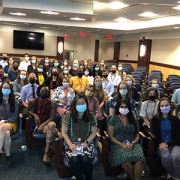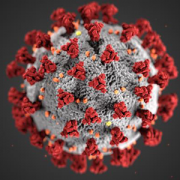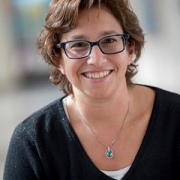Incoming residency class at Children’s National three times more diverse than national average

The new class of residents arriving at Children’s National Hospital on June 9, will be the hospital’s most diverse class ever. 51% of the incoming intern class identify with races and ethnicities underrepresented in medicine (UIM) including Black, Latino and Southeast Asian, a percentage that is more than three times the national average for diversity within residency programs.
“We have worked hard to make our residency class more diverse because we know that diversity among academic pediatricians helps dismantle systemic health care inequities faced by children,” said Aisha Barber, M.D., M.Ed., director of the Pediatric Residency Program at Children’s National. “Studies show that when patients see someone they identify with, it enhances patient trust and satisfaction. Diversity within medical ranks has also been associated with improved health care outcomes for patients from underrepresented backgrounds.”
Children’s National created outreach and pipeline programs designed to reach a larger more diverse group of medical students and to increase diverse students’ interest in academic pediatrics at Children’s National. Program leaders reach out through various student medical association meetings, nationally and regionally.
In 2015, the hospital developed Advancing Diversity in Academic Pediatrics, a scholarship program for senior medical students from backgrounds UIM to experience what a career in academic pediatrics might look like for them. Since the start of the scholarship program, the diversity of incoming resident classes has grown from 12% to the current 51%.
“This scholarship program changed my career trajectory as it introduced me to the field of pediatric academic medicine,” said Jessica Hippolyte, M.D., M.P.H., pediatric chief resident at Children’s National and graduate of the scholarship program. “I was paired with minority resident and faculty mentors, networked with senior program leadership, received guidance on the application process and gained tremendous insight on all the opportunities available to Children’s National residents.”
Under the scholarship program, fourth year medical students are invited for a month-long clinical rotation and given a stipend funded by the CEO’s office at Children’s National. The program’s curriculum not only focuses on the clinical experience, but through relationships with mentors, focuses on the development of interview skills and the creation of a competitive curriculum vitae, or CV.
Since the program began, there have been over 70 participants and a 25% match rate to the pediatric residency program at Children’s National. Four members of the 2021 class are graduates of the scholarship program.
Every March, medical students learn which residency programs they will train with on what is known as ‘Match Day’. Children’s National receives over 2,000 applications per year for 41 residency positions. That’s more than half of medical student applications in the U.S. for pediatrics. Applicants were recruited from some of the top medical schools in the U.S. including the University of Pennsylvania, Columbia University, University of California, San Francisco and University of California, Los Angeles.
In addition to the increases in the racial and ethnic diversity of the incoming residents, at least 10% of the incoming class identify as LGBTQ, which mirrors the percentage of adults in D.C. who identify as LGBTQ.
“There are many factors that indicate to us that someone will make a great resident and a great doctor,” said Dr. Barber. “At Children’s National, we strive to be sure our residents understand that they’re appreciated not for how they add to diversity statistics, but for who they are as a whole person and all they have to contribute to our community.”











